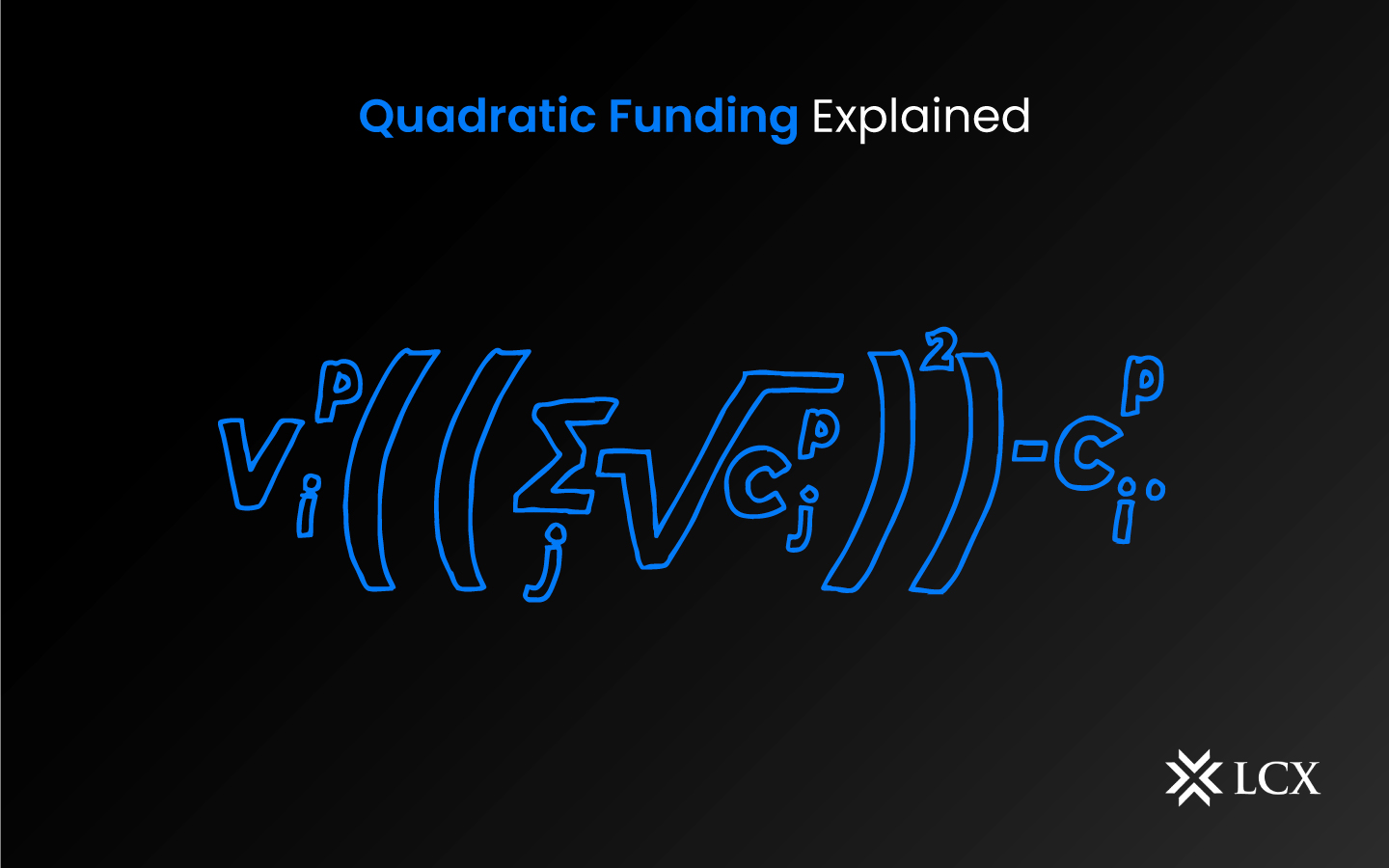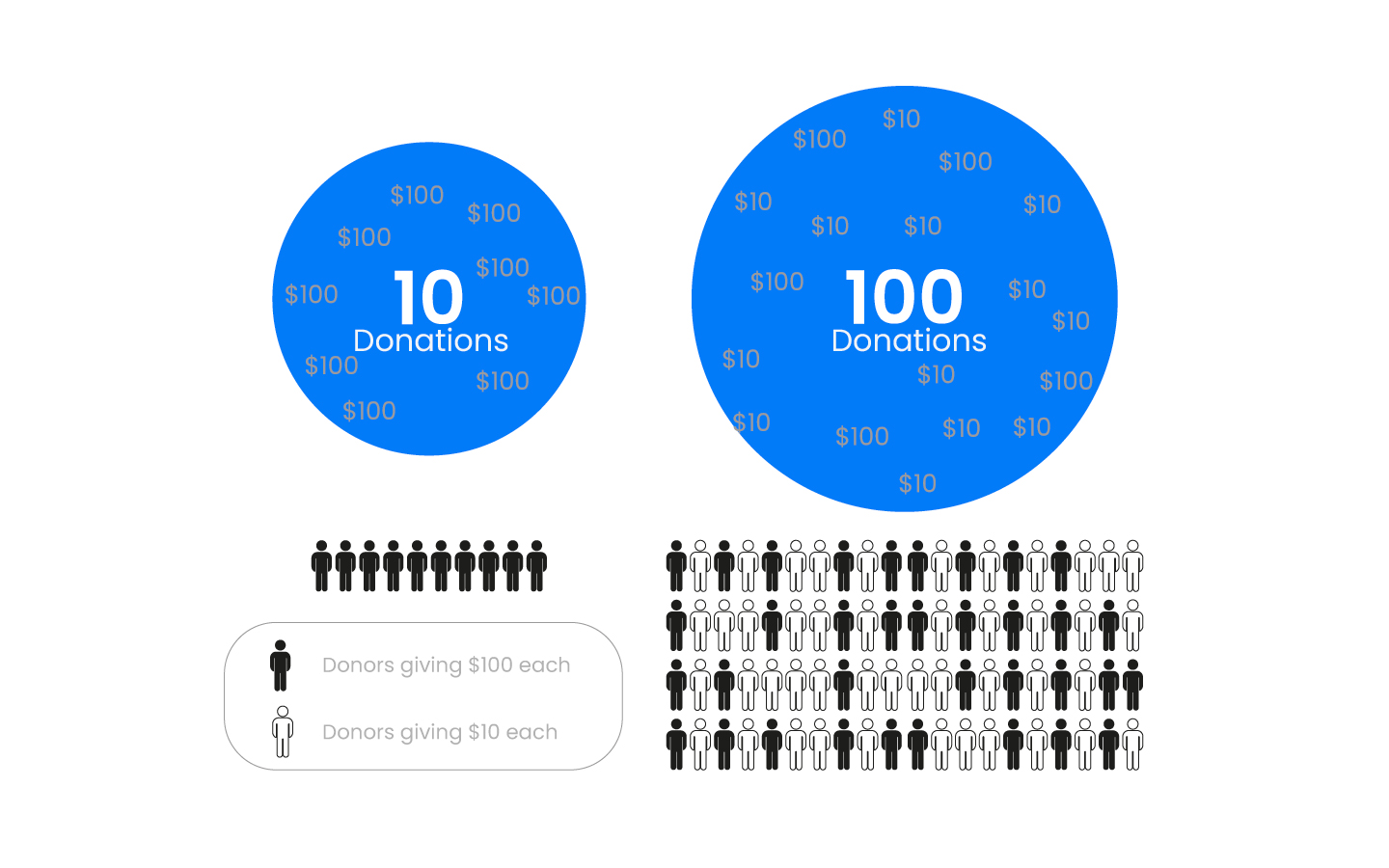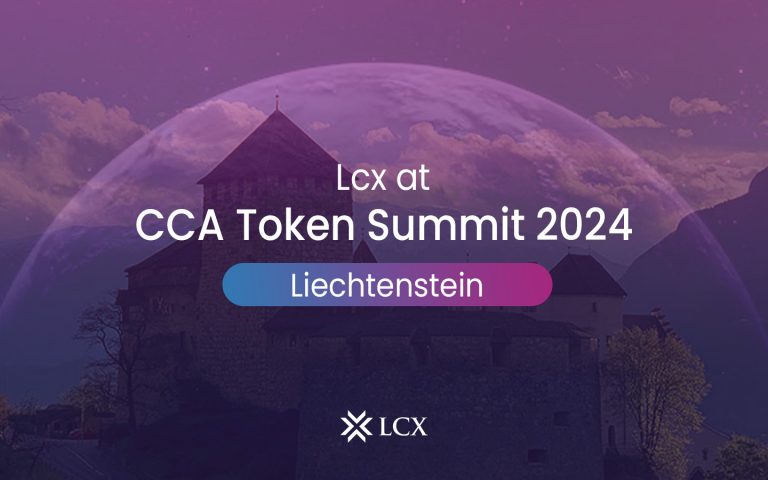Over the past ten years, cryptocurrencies have skyrocketed in popularity, but a few significant obstacles have prevented their widespread adoption and success. One such challenge is the unequal distribution of wealth and power in the cryptocurrency ecosystem. A small number of individuals or entities with large amounts of resources can sway the decisions of the community, leading to a centralized and oligarchic ecosystem.
Quadratic funding is a new solution that aims to address this challenge by democratizing cryptocurrency.
Introduction to Quadratic Funding
Quadratic funding is a democratic mechanism for crowdfunding that seeks to promote equitable, inclusive funding for public goods such as open-source software, scientific research, and public art initiatives.
The concept of quadratic funding combines modest individual contributions with larger matching contributions from benefactors or contributors. Each donor’s contribution is matched by the total amount generated, the number of unique contributors, and the total amount donated using quadratic funding.
As a consequence, contributions from more individuals are matched more generously than those from fewer individuals. To increase diversity and fairness, this strategy encourages a greater number of modest donations rather than a small number of large ones from wealthy individuals or organizations.
Due to its adherence to the principles of decentralization and community participation, quadratic funding is gaining popularity in the blockchain and cryptocurrency communities. Quadratic funding ensures that funding is distributed more equitably and transparently, with decisions based on the will of the community rather than the interests of a few affluent donors, incentivizing small contributions from a large number of individuals.
How Does Quadratic Funding Work?
In contrast to conventional fundraising, which tends to favor large donors, quadratic funding is designed to match small donations with a larger pool of funds so that everyone has an equal say in determining which public goods to finance.
At its core, quadratic funding is based on a simple formula that combines modest contributions with a larger fund to compensate well-supported initiatives with additional funding. The formula is designed to give smaller donations greater weight, leveling the playing field and ensuring that public assets are funded on the basis of community support as opposed to the interests of a small number of wealthy donors.
The steps below illustrate how quadratic funding can democratize the financing of public goods:
- Create a matching pool of funds: Funds are set aside in a matching pool for matching charitable contributions.
- Invite community support: The community is encouraged to contribute to the public assets it values.
- Distribute matching funds using a quadratic formula: The matching pool of funds is distributed using a quadratic formula that provides greater weight to smaller contributions. For instance, the quadratic formula would give the project 4100 $10 donations more matching funds because it has more favored benefactors than the project with 10 $100 donations.
- Distribute funds to public goods: The matching funds are then allocated based on the formula to the public goods.
By democratizing allocation, quadratic funding can help ensure that open-source software initiatives and other public goods receive funding proportional to their appeal and value to the community.
Smaller initiatives that may not have the support of major funders but are still important to the community can greatly benefit from this. In addition, by allowing developers to pool their resources and collaborate on projects, quadratic funding can foster cooperation and collaboration among developers.
Advantages and Disadvantages:
Here are the advantages of quadratic funding:
- By providing matching funds for small contributions, quadratic funding can encourage a diverse group of donors, regardless of their financial means.
- Motivates the production of high-quality work by rewarding contributions that receive a great deal of positive public feedback.
- Reduces the impact of wealthy donors with predetermined objectives or biases that could distort the distribution of funds.
- Supports transparency by making it clear and apparent how donations are distributed and allowing users to track the progress of funded projects.
The disadvantages of quadratic funding are:
- Measuring impact is problematic due to the fact that it can be arbitrary and intricate, making it difficult to allocate resources judiciously.
- There is a possibility that dishonest individuals will attempt to exploit the quadratic funding scheme by fabricating contributions or collaborating to raise their own contributions.
- The categories of materials that receive funding under quadratic funding may continue to be influenced by the prejudices and preferences of the larger community.
- Establishing a quadratic fundraising system necessitates expensive infrastructure and investment to construct and maintain the platform, as well as inform and entice potential donors, thereby limiting its accessibility to individuals and organizations with the financial means to fund it.
Role of Blockchain Technology in Quadratic Funding
In the future, blockchain technology may considerably improve the effectiveness and efficiency of quadratic funding. Blockchain technology can provide a secure, transparent, and immutable ledger of donations and funding disbursements, and can alleviate some potential issues and limitations with the current system. Smart contracts based on the blockchain can automate the entire funding procedure, reducing the risk of system abuse and manipulation and ensuring funds are distributed equitably and transparently.
Moreover, the decentralization made possible by blockchain technology can increase the availability of quadratic funding for smaller, less-resourced groups and the participation of more diverse communities. In light of this, blockchain technology has the potential to be an essential instrument in the future for supporting diverse, high-quality content and quadratic funding. The creation of tokens that signify contributions to a project can be facilitated by blockchain, allowing for more efficient tracking and transfer of funds.










